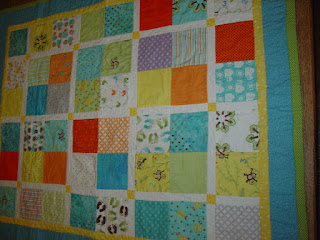Many of these tops were made from old blocks and/or vintage fabrics. I loved making them. So I just kept right on doing it.
These are some of the tops in the first box.
Box 2 has lots of reproduction tops, some of my favorites.
Box 3 has my Ruby McKim embroidered quilts and lots of other 1930s blocks made into tops.
Box 4 has a few good quilts, and a few I was not satisfied with. At least one of them has been in storage for over 20 years.
As you can see, I have a problem! I have been afraid to even count how many tops are in these bins. And even this does not address the stacks of blocks not yet made into tops.
This is why I started using the Pick Six system back in November. It's been over six months now, so I decided to evaluate how well it was working.
As some of you may recall, I made a list of 6 quilts to work on, and I only allowed myself to work on those quilts. They could not come off the list until they were COMPLETELY FINISHED, meaning quilted and bound. And nothing could go on the list until something came off. Quilts for charity were the exception--they did not go on the list, and I could work on as many as I wanted to.
So here are the results! Since November, I have completed 8 quilts from the list--the wool quilt, Henry's quilt, Debbie's challenge, the Civil War potholder quilt, the Dutchman's Puzzle, the repro Tumbler, Arlington (another Civil War repro), and the small Farmall quilt. So that's the plus side. On the minus side, 3 of the quilts that were on the list in the beginning are STILL on the list--the Ocean Waves top, the Basket of Chips top, and my great grandmother's Solomon's Puzzle. I've done a little more hand quilting on the Solomon's Puzzle, but I haven't touched the other two.
I don't want to be like one of those people who go on a fad diet, lose some weight, and start preaching to everyone they meet about it. I think this system is actually working for me, but it probably wouldn't work for everyone. Some people are a lot more organized than I am, and actually don't have an enormous backlog of quilt tops and blocks. And some people would feel so restricted by this system that they wouldn't want to quilt at all.
For now, I'm going to stick with it. What it means for me is NO MORE UFOs. And by that I mean I'm not CREATING any more. That doesn't mean I don't HAVE any more. (For evidence, see above photos.)
Let's talk UFOs. Do you have a lot? Do they make you feel guilty?





































